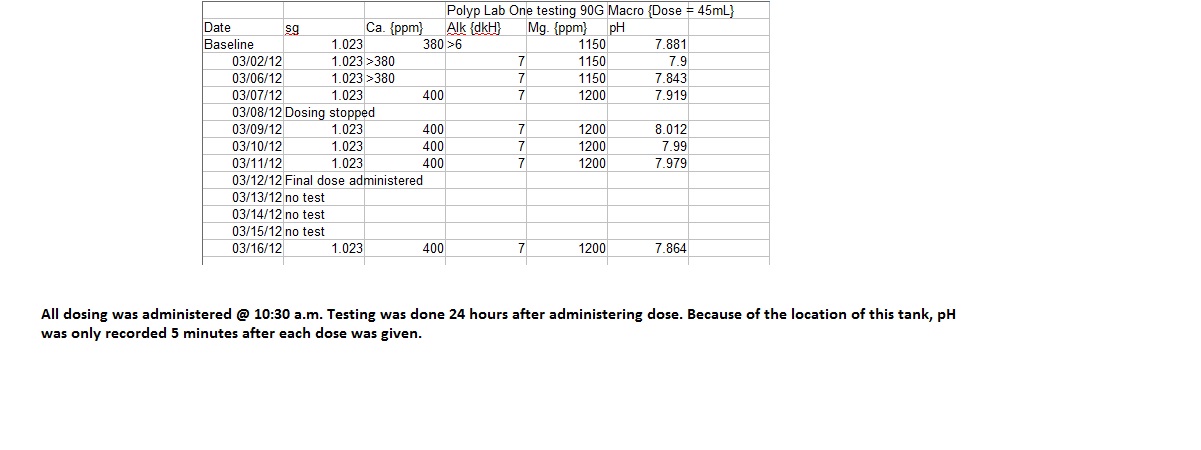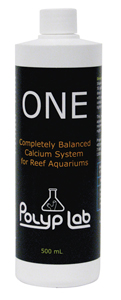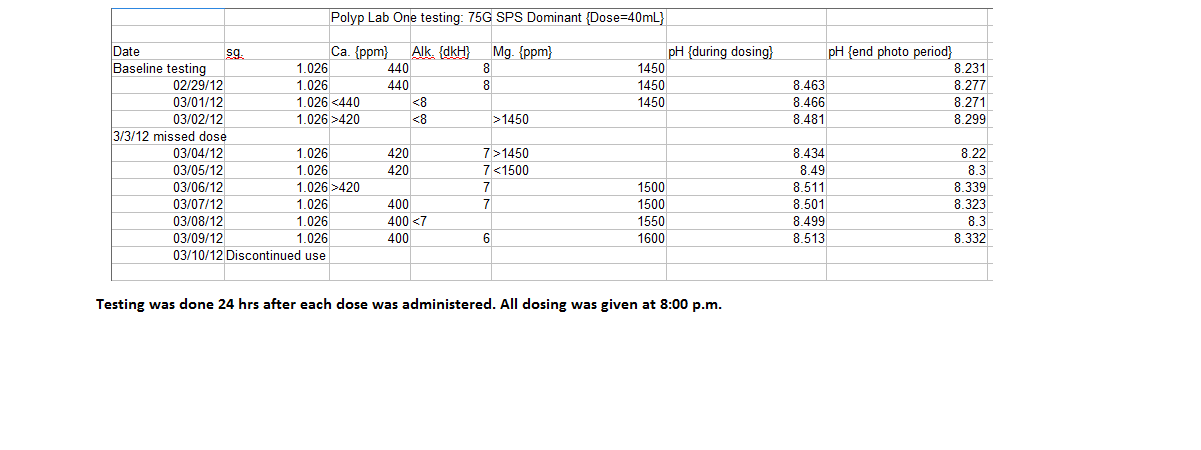 Recently I was asked to use and review a couple of products that are manufactured by a newer company in the hobby. Polyp Lab is located to the north, in Canada and according to their “About Us” page found on the web site, create products for the advanced aquarist and are ” (a team which is) perpetually working on new products. (Being hobbyists ourselves) with backgrounds in marine biology and aquaculture, we have the means to bring cutting edge innovations to your reef.” Personally I had not heard of Polyp Lab before I was asked to try out the products, or if I had I hadn’t paid attention to them. So when the two bottles of product arrived I was a bit skeptical.
Recently I was asked to use and review a couple of products that are manufactured by a newer company in the hobby. Polyp Lab is located to the north, in Canada and according to their “About Us” page found on the web site, create products for the advanced aquarist and are ” (a team which is) perpetually working on new products. (Being hobbyists ourselves) with backgrounds in marine biology and aquaculture, we have the means to bring cutting edge innovations to your reef.” Personally I had not heard of Polyp Lab before I was asked to try out the products, or if I had I hadn’t paid attention to them. So when the two bottles of product arrived I was a bit skeptical.
The first bottle I took from the box was Polyp Lab One. An all in one, completely balanced calcium system for all reef aquariums. From the label: One supplies calcium, magnesium and alkalinity to your reef in a simple and convenient formula. It is a fully balanced calcium system that does not require complicated reactors, multi-part systems or any extra equipment.
Reading on I see that One contains and is engineered from two forms of acetate and hydroxide salts. Polyp Lab claims that when properly dosed, the calcium and magnesium ions are freely available for uptake by corals, clams and other reef organisms. The acetate ions are metabolized by bacteria to biologically create available bicarbonate. The claim is also made that dosing this product will not raise or effect salinity and is Phosphate and Silicate free.
I was already skeptical. How many times have we seen a “one shot” fix all or attempt at that in the past? When I read the dosing instruction and the levels One will maintain with dosing, I became even more unsure about this product. Polyp Lab states that with proper dosing One will maintain:
400 ppm Calcium
7 dkH
1300 ppm Magnesium
Polyp Labs states that each bottle contains approximately
70,000 mg/L Calcium
16,000 mg/L Magnesium
4,00 meq/L of Alkalinity
These numbers are already below where I and most other SPS keeper’s that I know keep them. Because of this, I decided to use One in two of my systems. A 75 gallon SPS reef and a 90 gallon macro tank. The 75 is still young at just around 7 months. It is full of SPS frags, LPS and a clam. Dosing is done with pumps and 2 part supplements. Saturated water (kalk) is also used as a means to stretch out the costly 2 part and maintain pH. The 90 is mature at over a year old. It is my experiment tank and has not had a water change in over a year. Calcification is predominantly done by Coralline algae in the 90.
I took the baseline reading in the 75 on February 28th. I began dosing the next day and kept the results of the testing recorded on a spread sheet. Another area of my concern centered on the ability of the product to dissolve completely. That unease was quickly laid to rest. I found that it didn’t matter if I sprinkled the powder in or dumped it a cap full at a time, in high or low flow the supplement completely dissolved in a matter of seconds. I expected to see some clouding of the water like a person would see if 2 part Alkalinity supplement or Kalk is dripped into tank water, but there was none. The only evidence of anything being added to the water was a bit of precip on the surface but even that cleared and was gone in a second.
I intended to dose and test at exactly the same time each evening but I found it difficult to get back into the swing of manually dosing which resulted in missing a dose completely during the trial. As you can see in the data below, parameters began to swing out of whack in the 75. Calcium and Alkalinity were nearly impossible to keep up at even the lower number and magnesium was not being used near fast enough and began to rise. I may have been doing something wrong but I doubt it. The instructions on the bottle are clearly written and easy to comprehend. I discontinued use of the product in this tank just 10 days after the beginning dose was given. I found the claims to the buffering aid to be accurate. The pH in this system is continually monitored with a controller. The additive would need to travel the entire system before moving from the introduction point to the probe and at each dose the pH would rise a couple tenths. Over the few days I used One pH began to hold closer to 8.4, a feat I hadn’t achieved with kalk or two part.
The 90 gallon was the second tank that would receive this product. Demand for calcium is low in this tank as I stated before. Coralline is the predominant user of these elements. No dosing or water changes had been given to or performed prior to the first dose of One. It was no surprise the readings were very low when the base line tests were taken. Because this tank is located in my retail store and is 30 miles from my home; dosing, testing and pH where done and recorded differently.
Following the instructions exactly as I had done when dosing the 75, it was only 2 days to get the levels back up and almost exactly where the product claims they would be maintained. Dosing went on for three days and then was intentionally missed one day. I then dosed 4 days, stopped and did not test for three. Testing on the 16th showed that levels had not changed and that pH had fallen back to close to the baseline reading.
 I feel in theory this is a great product but in reality it’s use is pretty limited to maintaining small nano sized tanks. Unless of course you wouldn’t mind the tedious task of measuring out doses for larger tanks in increments of 5ml and doing so on a daily basis. One, in my opinion is a perfect calcium supplement for a macro tank and even better if the said tank is also home to seahorses. The light demand for calcium carbonate from the algae and even the ponies themselves is exactly the slot One would fill perfectly.
I feel in theory this is a great product but in reality it’s use is pretty limited to maintaining small nano sized tanks. Unless of course you wouldn’t mind the tedious task of measuring out doses for larger tanks in increments of 5ml and doing so on a daily basis. One, in my opinion is a perfect calcium supplement for a macro tank and even better if the said tank is also home to seahorses. The light demand for calcium carbonate from the algae and even the ponies themselves is exactly the slot One would fill perfectly.












0 Comments